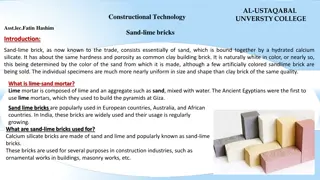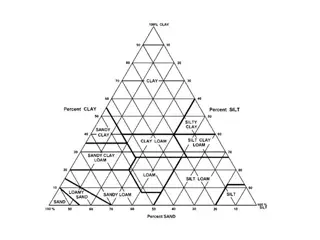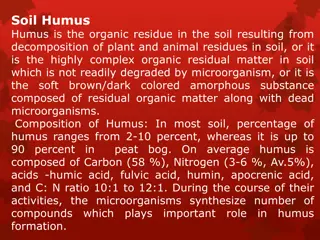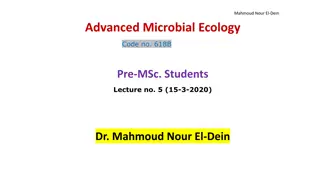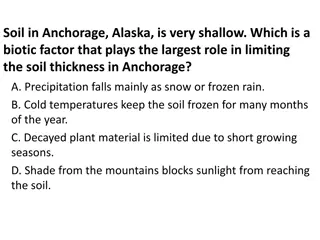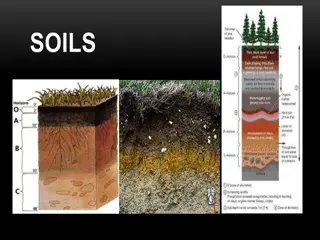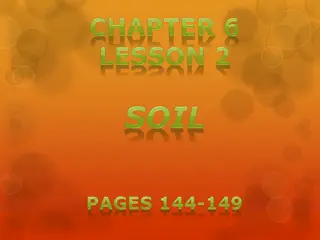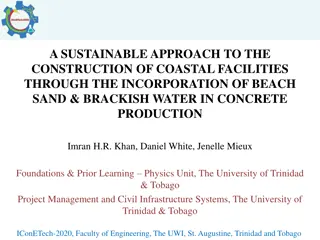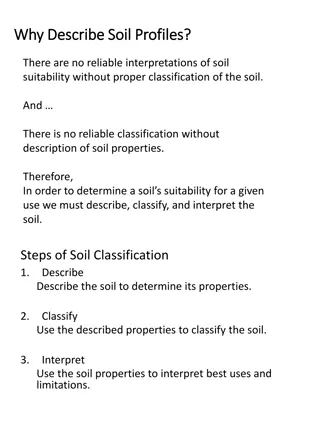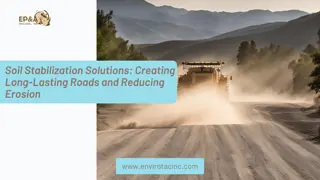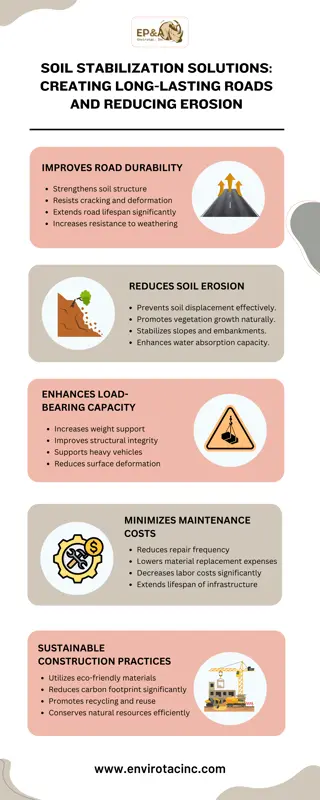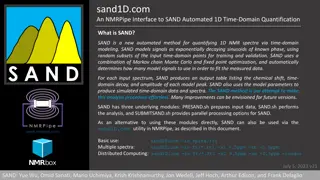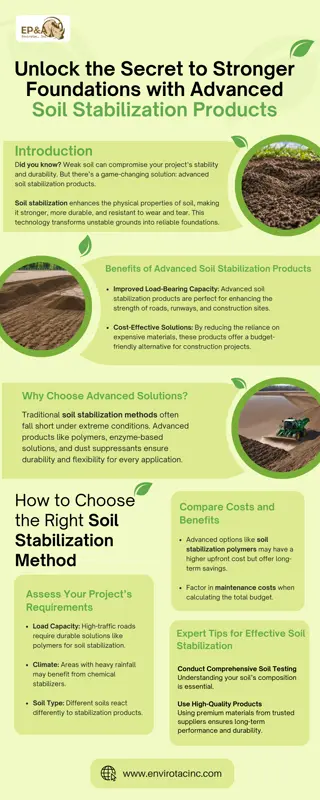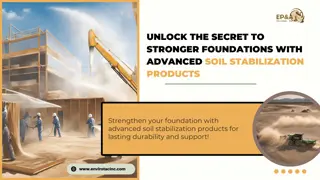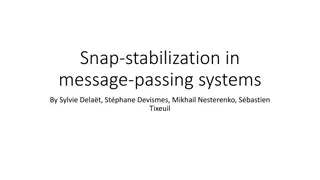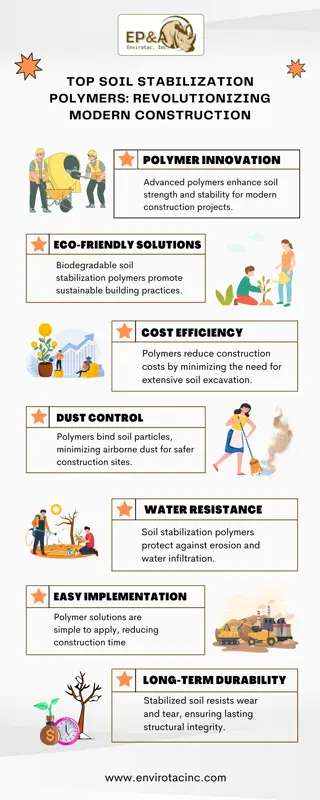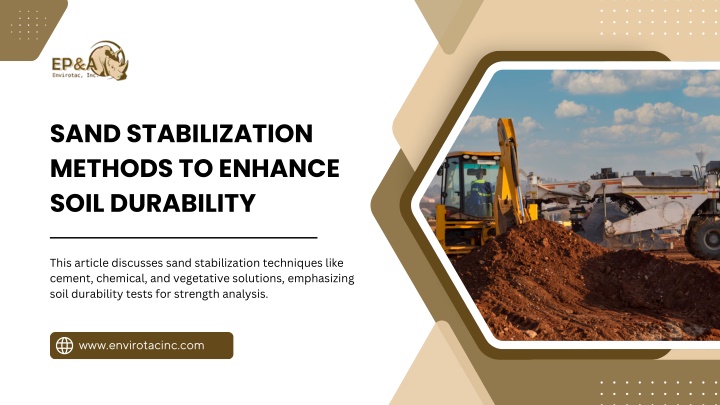
Sand Stabilization Methods to Enhance Soil Durability
Sand stabilization methods improve soil durability by reducing erosion and increasing strength. Techniques include chemical binders, geotextiles, and vegetation. Ideal for construction, roads, and desert areas. #SandStabilization #SoilDurability #Ero
Download Presentation

Please find below an Image/Link to download the presentation.
The content on the website is provided AS IS for your information and personal use only. It may not be sold, licensed, or shared on other websites without obtaining consent from the author. If you encounter any issues during the download, it is possible that the publisher has removed the file from their server.
You are allowed to download the files provided on this website for personal or commercial use, subject to the condition that they are used lawfully. All files are the property of their respective owners.
The content on the website is provided AS IS for your information and personal use only. It may not be sold, licensed, or shared on other websites without obtaining consent from the author.
E N D
Presentation Transcript
SAND STABILIZATION METHODS TO ENHANCE SOIL DURABILITY This article discusses sand stabilization techniques like cement, chemical, and vegetative solutions, emphasizing soil durability tests for strength analysis. www.envirotacinc.com
INTRODUCTION Unstable sand soil may cause serious problems in construction, agriculture, and environmental conservation. Soil erodes, causes damage to foundations, and enhances land barrenness without proper sand stabilization. Proper sand stabilization using proper techniques can greatly improve soil strength and guarantee stability for long-term durations.
WHY SAND STABILIZATION IS ESSENTIAL? UNDERSTANDING SOIL DURABILITY Soil quality definition, in this case, indicates its capacity to support plant growth, structure, and resist degradation. Part of this is soil durability, a measure of how well the soil retains its structure under stress from environmental and mechanical forces. ADVANTAGES OF SAND STABILIZATION Avoids Erosion : Hides soil from water and wind erosion. Adds Structural Strength : Stabilizes road and building foundations. Supports Agriculture : Helps retain moisture and nutrients for crops. Reduces Dust Pollution : Minimizes airborne dust, improving air quality.
EFFECTIVE SAND STABILIZATION METHODS CEMENT STABILIZATION OF SOIL One of the safest sand stabilization practices is cement soil stabilization, wherein sand is blended with cement and water to provide a denser and more solid surface. BENEFITS OF CEMENT STABILIZATION: Offers high load-bearing capacity and durability. Prevents water infiltration, eroding. Suitable for roads, embankments, and industrial foundations.
CHEMICAL SOIL STABILIZATION Chemical soil stabilization is a current option for rapid and efficient sand stabilization. This approach binds soil particles together using stabilizing agents including polymers, resins, and enzymes, which improves KEY BENEFITS Quick application : Reduces project delays. Long-lasting results : Offers superior soil durability. Eco-friendly options available : Some stabilizers are biodegradable.
MECHANICAL STABILIZATION This method reinforces sand using physical techniques such as Compaction: Pressing sand layers to increase density. Geotextiles & Geogrids: Synthetic materials that enhance stability. Soil Nailing: Steel rods inserted into the soil for extra support. WHY USE MECHANICAL STABILIZATION? Provides immediate stabilization. No chemicals are required, making it eco-friendly. Ideal for roads, embankments, and construction sites.
VEGETATIVE STABILIZATION Because plant roots hold soil together, preventing erosion and gradually increasing soil durability, using plants to stabilize sand is a sustainable and natural method. BEST PLANTS FOR SAND STABILIZATION ? Native grasses : Strong root systems improve soil stability. ? Shrubs and bushes : Serve as natural windbreaks. ? Leguminous plants : Improve soil fertility while stabilizing sand.
TESTING SOIL DURABILITY A soil durability test helps evaluate the effectiveness of sand stabilization methods. It determines soil strength, compaction levels, and erosion resistance. COMMON SOIL DURABILITY TESTS California Bearing Ratio (CBR) Test : Measures soil strength for road construction. Compaction Test : Determines the best moisture content for stabilization. Erosion Resistance Test : Measures soil's resistance to environmental stress.
WHY SELECT ENVIROTAC INC. FOR SAND STABILIZATION? When it is a matter of sand stabilization, selecting a suitable solution is imperative. Envirotac Inc. provides next-generation chemical soil stabilization products meant to increase the durability of the soil, limit dust, and inhibit erosion. KEY BENEFITS OF ENVIROTAC INC. SOLUTIONS Proven Effectiveness : Used globally in construction and environmental projects. Eco-Friendly : Sustainable stabilizers that support environmental conservation. Long-Lasting Stability : Ensures maximum soil durability with minimal maintenance.
CONCLUSION Attaining soil durability through effective sand stabilization is crucial in construction, agriculture, and conservation. Whether using cement, chemical, or vegetative methods, proper techniques ensure stability. With suitable stabilization and durability testing, soil performance improves, preventing erosion and ensuring long-term strength and quality solutions.
THANK YOU CONTACT US Phone (760)600-5759 Website www.envirotacinc.com

